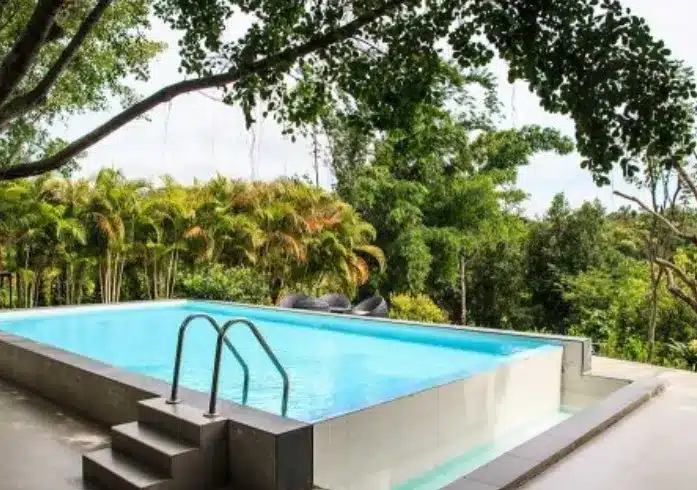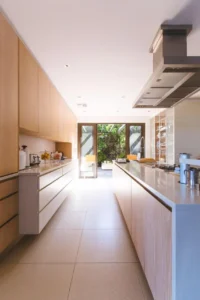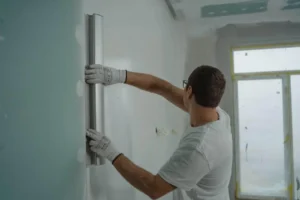Having a swimming pool in your backyard is a luxury that can provide endless entertainment, relaxation, and a focal point for family fun. The prospect of building a pool can be daunting, but with advancements in pool design and construction, installing a pool yourself is more achievable than ever before. This guide will walk you through the essential steps for constructing your own swimming pool, with a focus on DIY methods that can save you money without compromising on quality.
Understanding Pool Types and Materials
Before embarking on your DIY pool project, it is important to understand the different types of pools available. Your choice will affect the installation process, cost, and maintenance requirements.
Fiberglass Swimming Pools
Fiberglass swimming pools are a popular choice for DIY enthusiasts due to their ease of installation and low maintenance. These pools are factory-moulded into a single large piece and transported to your home for installation. Their smooth surface inhibits algae growth and the non-porous nature of fiberglass reduces the need for chemicals, making them an eco-friendly option.
Planning Your DIY Swimming Pool Project
Planning is crucial when it comes to installing a swimming pool. Here’s what you need to know:
Zoning and Permits
First and foremost, check your local zoning laws and obtain the necessary building permits. This will determine the legality of constructing a pool on your property, size limitations, fencing requirements, and other regulations.
Choosing the Right Location
Select a level spot in your backyard that receives a good amount of sunlight and is away from trees, which can drop leaves into the pool. Also, consider the proximity to power lines and how water runoff will be managed to avoid flooding.
Digging the Hole
Once you have all approvals and have chosen the location, the next step is excavation. The size and depth of the hole will depend on the pool you’ve chosen. Hiring a professional excavator can be worth the investment, as they will ensure it’s done safely and to specification.
Pool Base Preparation
After the hole is dug, it’s time to prepare the base. This often involves grading the soil and adding a layer of sand to create a smooth, flat surface. For fiberglass pools, a bed of gravel is commonly used to support the pool shell and manage drainage.
Installation of the Pool Structure
For a DIY swimming pool from Swimming Pool Kits Direct, you will receive detailed instructions for installation. Whether it’s an above-ground or in-ground pool, following the manufacturer’s guidelines precisely is critical for ensuring the pool’s longevity and safety.
Plumbing and Filtration
Once the structure is in place, you’ll need to install the plumbing and filtration system. The complexity of this step will vary based on your pool’s design. You must ensure proper water circulation to maintain pool health and cleanliness.
Electrical Work
Handling electrical components for pumps and lighting requires knowledge of electrical systems to avoid accidents. It’s often recommended to hire a licensed electrician for this stage of the installation.
Pouring Concrete or Backfilling
In-ground pools may require a concrete deck or patio surrounding the pool. Pouring concrete is an intricate process, so consider professional help if you’re unsure. For above-ground or certain fiberglass pools, backfilling around the pool walls with sand or gravel is essential for stability.
Finishing Touches
Adding pool coping, decking, and landscaping will transform the construction site into a backyard oasis. Be creative and choose durable materials designed for outdoor use to enhance the beauty and functionality of your pool area.
Plunge Pool Kits
If space or budget is limited, consider plunge pool kits. These smaller pools are perfect for cooling off and relaxation, and their compact size makes DIY installation more manageable.
Maintaining Your DIY Pool
Ongoing maintenance is key to enjoying your DIY pool for years to come. Regular cleaning, balancing water chemistry, and servicing equipment are all part of the necessary routine to keep your pool in top condition.
DIY vs. Professional Pool Installation
DIY pool installation can save you money, but consider the amount of work and expertise required. If you’re not confident in your abilities for certain stages of the installation, hiring professionals for those parts of the project might be a wise decision.
Conclusion
Building a DIY swimming pool is a challenging yet rewarding project. It requires careful planning, hard work, and a bit of courage to take on the labour-intensive tasks involved. However, by choosing the right pool type like fiberglass pools or plunge pool kits, understanding the process, and knowing when to seek professional help, you can successfully create your own backyard paradise.
Remember to do thorough research and follow all local regulations and safety guidelines. With determination and attention to detail, you’ll soon be basking in the pride of a job well done as you enjoy your new swimming pool.
Also Read-Selecting the Right Tech Stack for Mobile App Success










